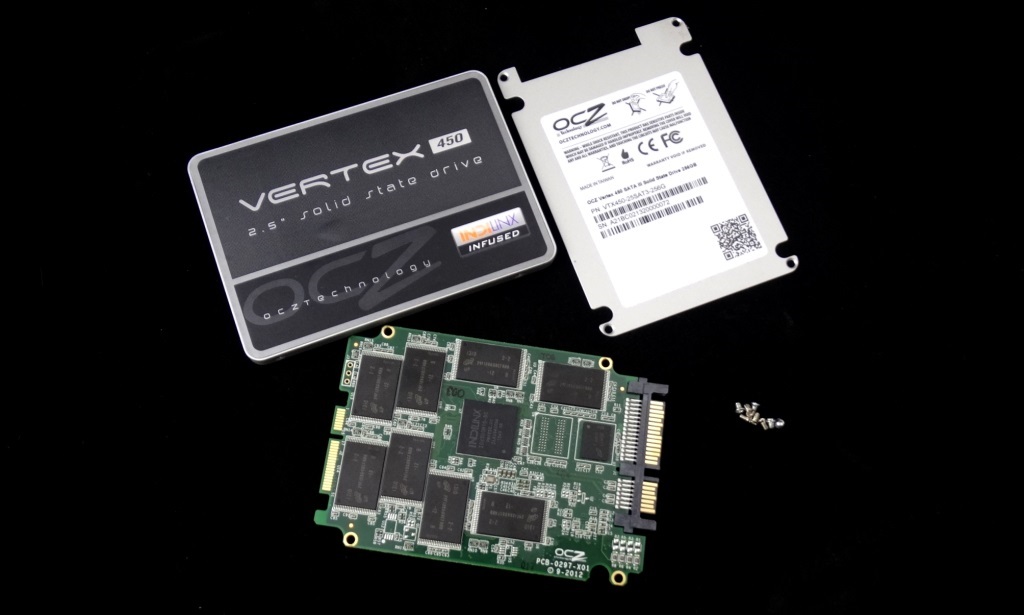REPORT ANALYSIS AND FINAL THOUGHTS
Whether you are a fan of OCZ or not, there is no overlooking the fact that they are a pioneer in the SSD industry, and unquestionably, the driving force that has pushed SSD advance to where it is today. Granted, they have jumped in with a head first approach more times than not, and experienced that cold chill of waters just covered with a skin of ice, but they have overcome the even worst in bumps and are the better for it today. As much as they may have a few scars, they have more accolades for their efforts than any other SSD manufacturer in the industry. Today is a new day though and the OCZ Vertex 450 needs to make it on its own, just as every other SSD before it.
If there is one thing that the Barefoot 3 controller has brought to the table, it is great performance regardless of file type. Just like the Vector and the Vertex 4, the Vertex 450 easily handles 100% incompressible data that we would typically see in media files, and transfer speeds above 500MB/s are typical. Although this might highlight the Vertex 450, its all around performance is just as strong and not far off that of the OCZ Vector. In fact, the only negative we see in the Vertex 4 is that it has a 3 year warranty, vice that of 5 years that we see in the Vector, and this just might be the case to ensure Vector sales and a clear separation between the two SSDs.
Availability and pricing will be the key to success of the OCZ Vertex 450, and with OCZ reducing their MSRP even before product release, they mean business. The Vertex 450 is intended to replace the Vertex 4 and will most likely also slow sales of the ‘LSI SandForce Driven’ Vertex 3 to a halt simply because of the pricing model. OCZ have introduced the Vertex 450 at below the $1/GB for the 256 and 512GB capacities because they know that combining performance, capacity and value will result in a very successful campaign. The Vertex 450 SSD is expected to be available at retailers![]() shortly after this report and don’t be surprised if its price is a bit high initially; this is often the case with top tier SSDs in demand.
shortly after this report and don’t be surprised if its price is a bit high initially; this is often the case with top tier SSDs in demand.
Another positive are the efforts that OCZ has made to keep everything in-house and pass on savings to the customer. Their purchase of Indilinx and PLX provides OCZ with that proprietary controller and firmware expertise they sought and this is an advantage that some flash manufacturers haven’t got as of yet. In addition, memory cost is reduced through volume purchase and packaging of their own NAND flash wafers.
The OCZ Vertex 450 is a great looking SSD with a solid build, capable of performance equal to and above that of many upper tier SSDs, comes standard with such things as a desktop adapter and Acronis Cloning software, and the pricing model ensures that the consumer will be getting the best for great value. This new Vertex family member is being recognized with our Editor’s Choice Award, just as it’s predecessors have earned before it. Congrats OCZ!
 The SSD Review The Worlds Dedicated SSD Education and Review Resource |
The SSD Review The Worlds Dedicated SSD Education and Review Resource | 

Any clue as to when will a new LSI Sandforce generation of consumer SSDs will reach the market – they seem long overdue…
The SF-2000 Rev B, which is a low power version of the original, has been announced in the last few days but no news on any new version controller.
Thanks.
Maybe they’ll take some more time, like Indilinx took from Vertex 1 to Vector products… but it is a pity as it would create more competition.